News

Stories from the Field: Electrofishing
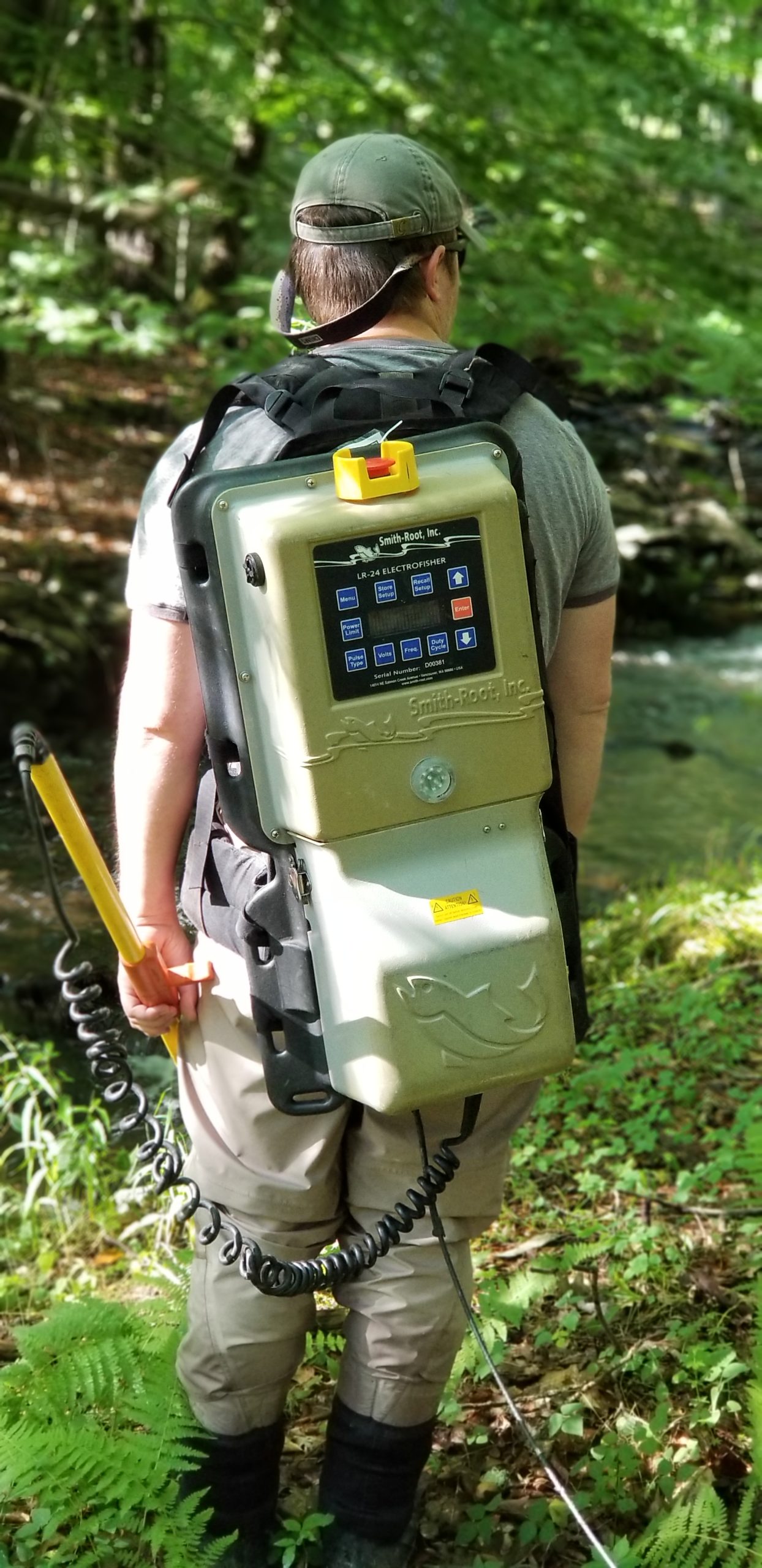
Chris of Aquatic Resource Consulting wearing the electrofishing backpack

By Devan George, Communications Coordinator
As a part of the District’s Watershed Stewardship, we monitor the water quality of surface waters in Pike County. This long-term monitoring program allows us to track and assess the quality of our surface water. One of the major monitoring efforts is the annual fish species monitoring in streams and creeks around the county. Our watershed specialist Rachel Posavetz is able to monitor the species that live in the surface waters through a process called electro-fishing. This term might call to mind a cross between Benjamin Franklin’s kite and a fly fishing pole, but the actual apparatus looks much more like a Ghostbuster Proton Pack. To the right, you can see the backpack used to electro fish, worn by Chris, of Aquatic Resource Consulting, who conducted all of the electrofishing.
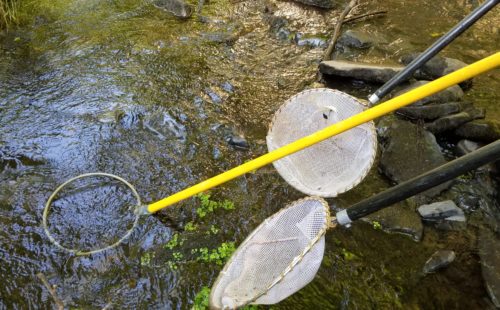
Electrofishing anode, and two nets to catch the stunned fish.
The actual process of electrofishing is conducted by turning on the machine, and sinking the attached anode ring (pictured to the right) into the water. The amount of electric current coming from the anode elicits taxis in any fish in the surrounding water, up to a specific distance. Taxis is an involuntary muscle response in the fish that makes the fish swim towards the anode. Once the fish reaches the anode, they go into narcosis, essentially stunned, and float belly up. This allows us to easily scoop them up and put them in a bucket of water to be identified at the end of the sampling.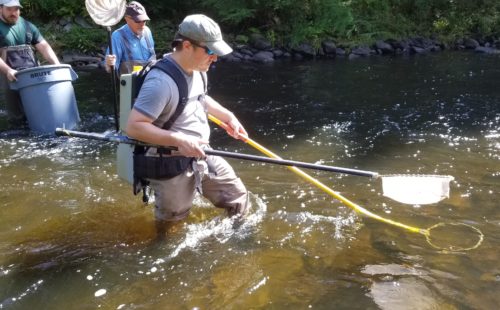
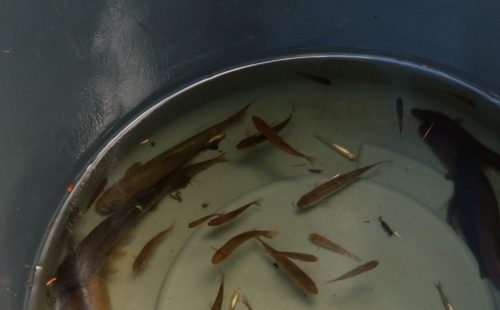
Bucket containing water and the fish collected during electrofishing
As a group, we move up the stream or creek, collecting the fish affected by the electricity, for 20 minutes. When the time is up, regardless of how far we traveled in the stream, the machine is turned off so we can collect data. The fish in the barrel are identified, and the habitat is analyzed and recorded. Rachel will collect other data, such as temperature, dissolved oxygen, alkalinity, pH, and conductivity. To view the results of previous years surface water quality monitoring, click here.
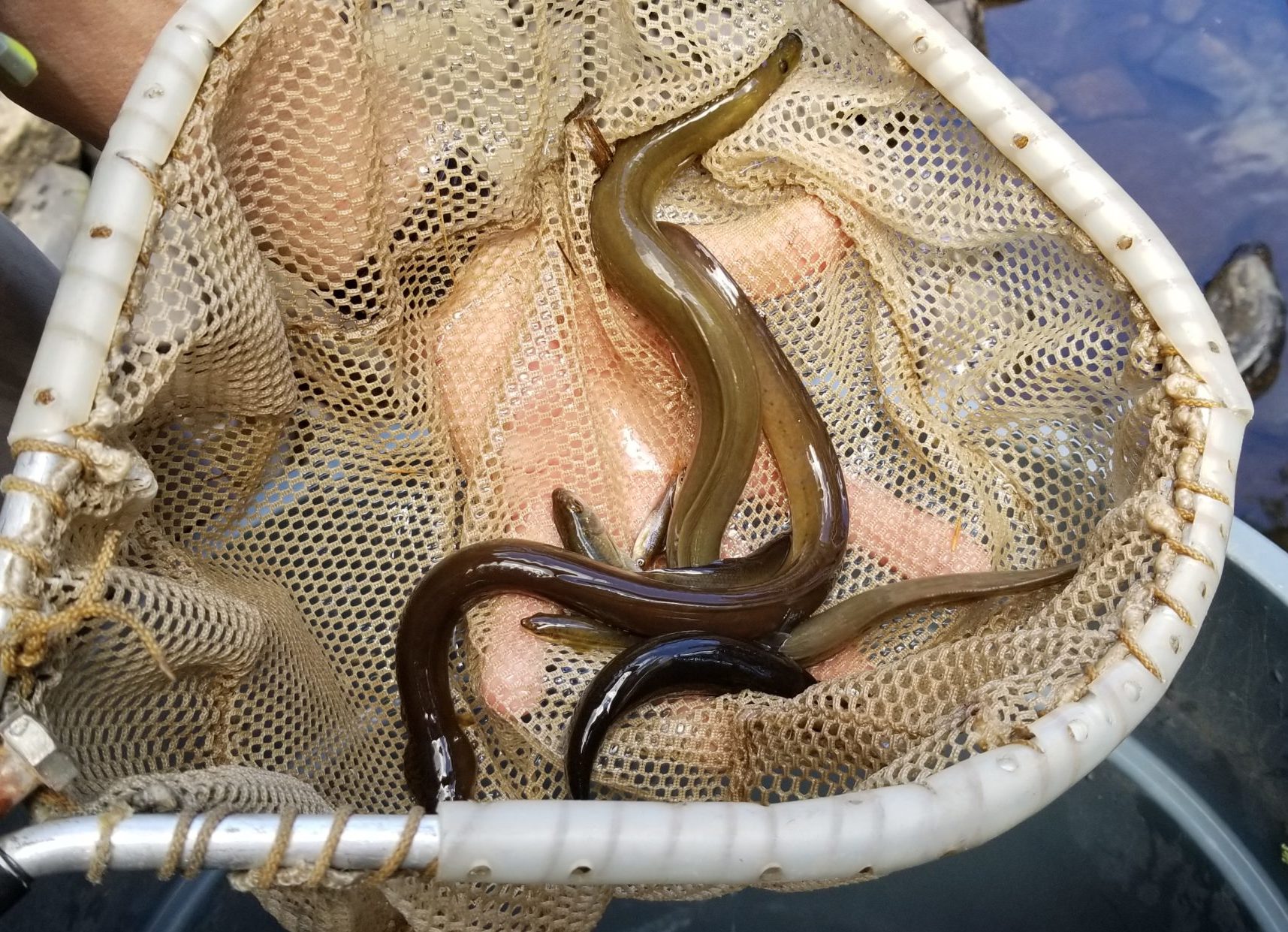
American eels, collected in Shohola Creek
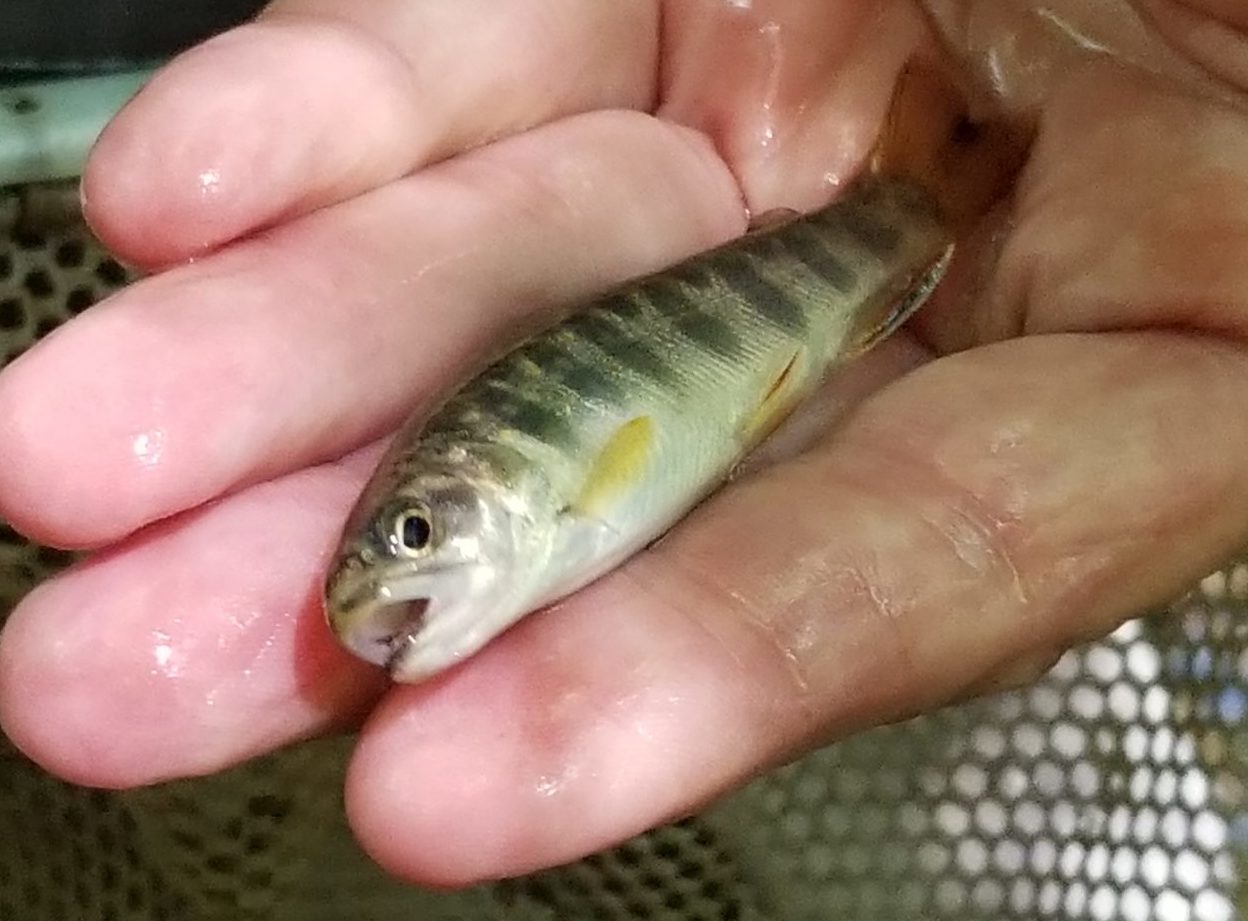
Young of Year Trout, collected in Kleinhans Creek
